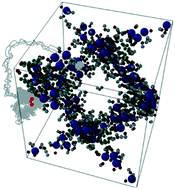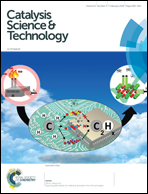Enhanced acidity of defective MOF-808: effects of the activation process and missing linker defects†
Abstract
Among the zirconium-based metal–organic frameworks, MOF-808 has been reported as a promising heterogeneous catalyst due to its inherent missing linker defects. In this work, we perform state-of-the-art density functional theory calculations along with ab initio molecular dynamics and classical reactive molecular dynamics studies of the activation processes of the MOF-808 material and correlate them to the type and strength of the proposed active sites. By starting with a defect-free structure, we added formic acid as a modulator and evaluated the effect of its removal after the activation process using calculations of adsorption of ammonia molecules. Results show that the activation process induces proton mobility on the zirconium node leading to its rearrangement and the release of water molecules. We evaluate the strength of the acid sites accompanied by Bader charge analysis, vibrational frequency data, and density of states examinations. The dehydroxylation and modulator removal that occur during the activation process affect the acidity of MOF-808. This theoretical rationalization of the activation process can serve as a basis for engineering defects in MOF-808 materials.



 Please wait while we load your content...
Please wait while we load your content...